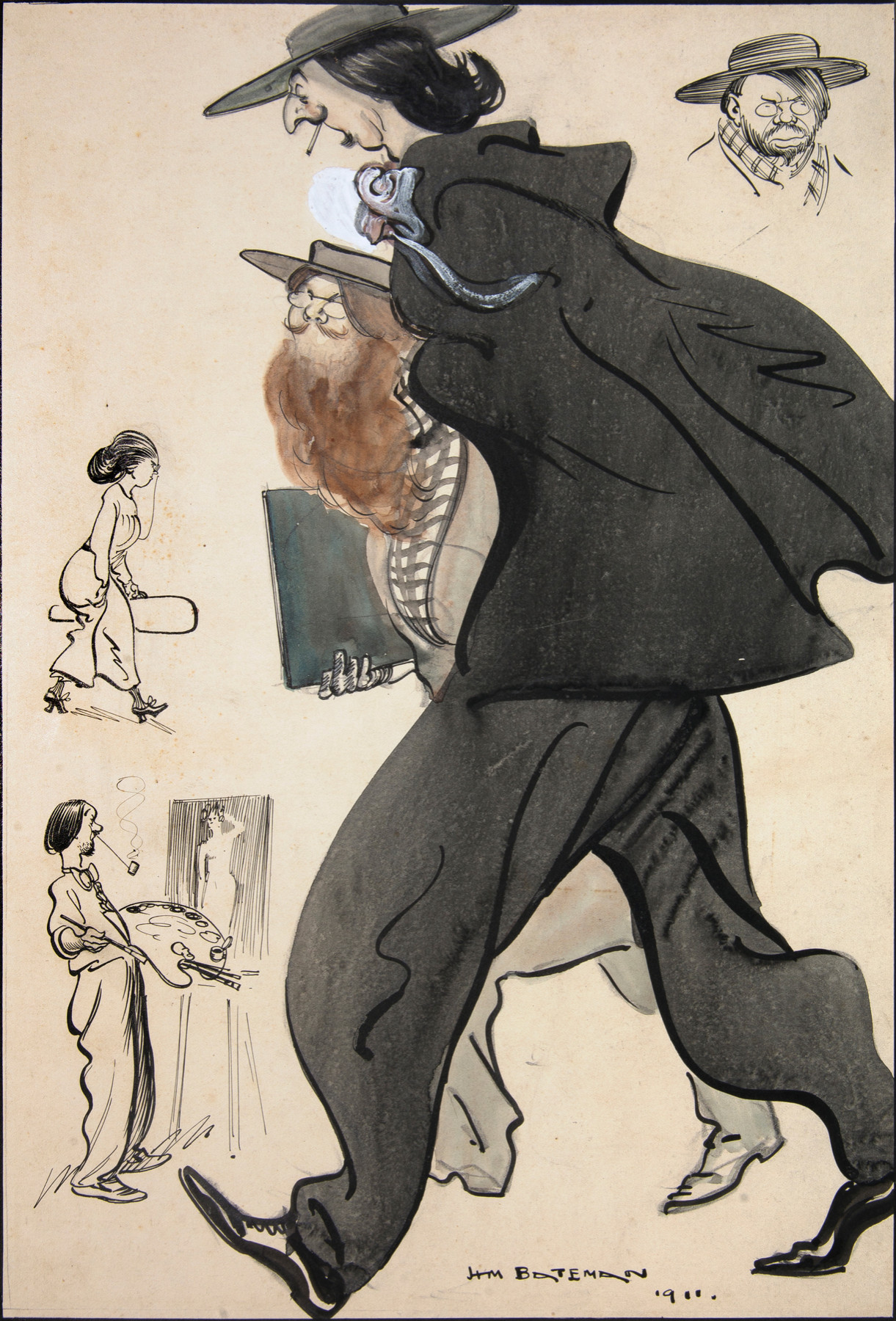
(click image to enlarge)
By the time that H M Bateman produced the present caricature, the ‘Latin Quarter’ of Paris had long been frequented by students, and specifically art students, in elements of Bohemian guise: long hair, broad-brimmed hats and loose articles of clothing, including capes and floppy bow ties. These elements had been established by the French Romantics of the 1830s, though they did so more in an attempt to define themselves in opposition to bourgeois conformity than to create a specific look. The British understanding of Parisian Bohemianism and the appeal of it for young would-be British artists was then fostered by a literary tradition that stretched from William Makepeace Thackeray’s The Paris Sketch Book (1840) to George Du Maurier’s Trilby (1894) and beyond.
Through the nineteenth century, British art students were increasingly attracted to the more liberal – and more thorough – French system of training. From the mid 1860s, some Paris ateliers even began to cater especially for foreign students, the most popular of which were the Académie Julian and the atelier of Carolus-Duran. Few of these were actually situated in the Quartier Latin, the area on the left-bank of the Seine that surrounds the Sorbonne (the historic university of Paris) and includes the Ecole des Beaux-Arts. Nevertheless, it became synonymous with student life, and its bistros and cafes proved a draw for British art students who were working across the city.